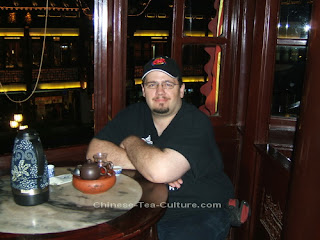**Be warned, the next photo is pretty gruesome!**
 I had heard, years ago about how, in Japan, they repair pottery using lacquer and so I began my quest to get my lid repaired. After a lot of research I found a man in Japan who does this type of repair and according to the images on his website, he does an incredible job and is quite the artisan. I learned that the lacquer can be done in any color, including the same color as the broken piece, to hide the repair. I decided I did not want to try to hide it. I wanted to celebrate the repair, so I chose matt silver for the repair's color.
I had heard, years ago about how, in Japan, they repair pottery using lacquer and so I began my quest to get my lid repaired. After a lot of research I found a man in Japan who does this type of repair and according to the images on his website, he does an incredible job and is quite the artisan. I learned that the lacquer can be done in any color, including the same color as the broken piece, to hide the repair. I decided I did not want to try to hide it. I wanted to celebrate the repair, so I chose matt silver for the repair's color.
The problem was that I could not contact the artist because he could not speak any English, and although my Chinese is decent, it did not help. I have another friend in Japan who deals in pottery and asked him if he would help me contact the artist, which he did, thankfully. He asked that I not name him, because he is too busy to help others contact the artist, so regretfully, I cannot tell you. I am sorry. I sent my poor little lid to the artist and waited. The artist told my friend, who translated for me that the repair could take as long as six months. It took five for my lid.


The repair is very labor and time intensive. First, the lid needed to be cleaned and prepared so that the lacquer would stick. The lacquer, which is made from the sap of the Varnish Tree (Toxicodendron vernicifluum). The lacquer is mixed with sand and a thin layer is applied, which needs at least three days to dry completely. The process is repeated until the chip is filled. Silver powder was applied and when it hardened, another layer of lacquer is applied and when that dried completely it was polished. The whole time my lid was being repaired, I still used my poor lidless teapot and I just dreamed of the day it would be whole.
 When the lid arrived, I was so excited! I used the teapot all night. Ah, what joy. The repair is perfect. Other than the fact that it is a different color from the teapot, it is as though the chip never existed. He did a fantastic job. Now, every time I use the teapot, I get a real sence of joy. I know I may put too much sentimentality into my zisha tea ware, but each one has its own history and this one, for example has been in my collection for around twenty years and it has seasoned beautifully. A lot of investment is put into each of my zisha teapots and I get very attached to them.
When the lid arrived, I was so excited! I used the teapot all night. Ah, what joy. The repair is perfect. Other than the fact that it is a different color from the teapot, it is as though the chip never existed. He did a fantastic job. Now, every time I use the teapot, I get a real sence of joy. I know I may put too much sentimentality into my zisha tea ware, but each one has its own history and this one, for example has been in my collection for around twenty years and it has seasoned beautifully. A lot of investment is put into each of my zisha teapots and I get very attached to them. 



